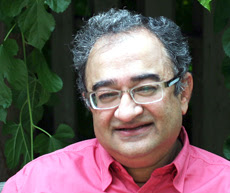Wednesday, January 3, 2007
Why the rush to execute Saddam?
Second trial might have proven too embarrassing
to the White House, notes Tarek Fatah
The Toronto Star
Four days after the ugly and degrading execution of Saddam Hussein, neither Prime Minister Stephen Harper nor any other Canadian politician has the courage to comment or say anything on the matter.
The execution, which was more reminiscent of a public hanging in the 18th century than a considered act of 21st-century justice, has shocked even the harshest critics of Saddam, but has left our politicians in a state of paralyzed silence.
If the Canadian Prime Minister chose to maintain silence, the American president did not lose much sleep and managed to express his now familiar musing about freedom and liberty. George Bush may consider the hanging of Saddam Hussein "as a milestone on the road to Iraqi democracy," but the reality is that no one outside his administration, not even Saddam's executioners, take the U.S. president's prognosis seriously.
The fact is that far from fostering democracy in Iraq, the execution of the Iraqi dictator has turned a murdering monster into a martyr of mythical proportions for the Arab people.
Saddam's stature will grow across the Arab world as each day passes and his crimes against his own people will be largely forgotten as new generations of Arab youth will see in him a rare Arab who stared death in the face and did not blink.
The man responsible for the death, torture and imprisonment of tens of thousands, should have been remembered for those crimes. Instead, because of the great American folly in Iraq, future generations of people in the Middle East will embrace his memory as an epitome of courage and resistance.
The fact that Saddam was sent to the gallows on the day a billion Muslims were commemorating the patriarch Abraham's willingness to sacrifice his son to God – Eid al Azha – will add a religious texture to Saddam's legacy.
Canada was not always a silent spectator on Iraq. In 1988 when Saddam was a U.S. client and had bombed the Kurds with chemical bombs, the United Nations Sub-Committee on Human Rights wanted to condemn Iraq for rights violations. However, so strong were the links between Saddam's Iraq and the U.S. that despite the massacre of the Kurds in Halabja, the vote was defeated 11 to 8. It was Canada and the Scandinavian countries that stood up to U.S. pressure and voted to censure Saddam's regime.
The question that remains unanswered and is a mystery to many is, why was there such haste in executing Saddam? Even though he was judged guilty by a questionable court, Saddam had yet to face a second trial where the charges were of a far more serious nature and which had international implications. His hurried execution appeared to be revenge, not justice.
At the second trial, which began in August 2006, Saddam and six co-defendants were charged with genocide during the Anfal military campaign against the Kurds of northern Iraq. In March 1988, Iraqi air force jets allegedly dropped chemical bombs on the town of Halabja killing thousands.
The trial could have shed much light on the massacre of the Kurds in Halabja. It could also have shed light on the links between Iraq and the U.S. during the Iran-Iraq War. At that time Saddam was a U.S. ally.
The trial would certainly have delved into the discussions former U.S. defence secretary Donald Rumsfeld had with Saddam during the three meetings the two had in Baghdad.
In fact, the ties that bound the United States to Saddam go back to the 1960s when the CIA helped the Baath Party stage a coup against the pro-Communist government of Abdel-Karim Qassim. Hundreds of Iraqi leftists, identified by the CIA, were systematically murdered – killings in which Saddam himself is said to have participated.
Additionally, the Halabja trial would also have shed light on the claim by Stephen C. Pelletiere, the CIA's senior political analyst on Iraq during the Iran-Iraq War, that both Iran and Iraq "used gas against the other in the battle around Halabja." Pelletiere made the astonishing claim in The New York Times in January 2003 that the "condition of the dead Kurds' bodies, however, indicated they had been killed with a blood agent – that is, a cyanide-based gas – which Iran was known to use."
With the death of Saddam, the secrets that could have emerged at the Halabja trial will probably never come to light. His death will be a relief to those in America who feared being exposed for having aided Saddam as he murdered so many of his countrymen.
To the teeming millions in the Muslim world who saw Saddam being led to his death by slogan-chanting masked men, his hanging was an act of revenge, not justice, a lynching, not the carrying out of a death sentence.
Friday, January 05, 2007
Subscribe to:
Post Comments (Atom)



No comments:
Post a Comment